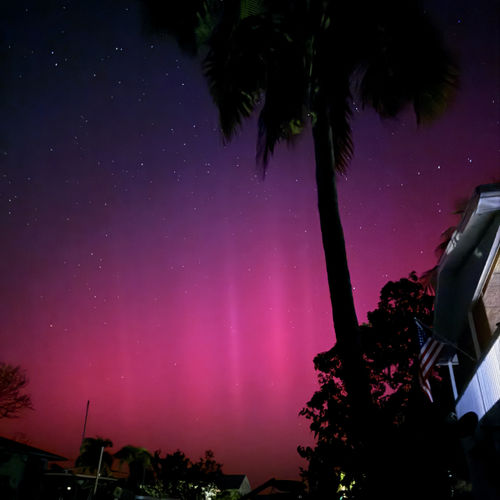
| Added | Fri, 04/03/2022 |
| Источники | |
| Дата публикации | Fri, 04/03/2022
|
| Версии |
The recent appearance of Aurora over Canada has experts puzzling. What is the mystery? They were orange in color. Pilot Matt Melnik was flying at an altitude of 36,000 feet over Canada on February 23 when he saw strange-colored lights from the cockpit window.
"I have been chasing and photographing auroras for over 13 years (often from airplanes) and for the first time I see orange," says Melnik.
What is so strange about orange? Joe Minow of NASA's Marshall Space Flight Center explains:
"Theoretically, nitrogen and oxygen (N2, N2+ and O2+) can produce radiation in the orange wavelength range, but it is usually weak compared to the stronger radiation of the same molecules in the red part of the spectrum. It's hard to understand how orange can dominate an auroral display."
Despite this, Melnik says that "these seem to be real aurors." The orange fringe danced in sync with the usual red and green aurors overhead. It didn't look like an artifact of city lights or distant twilight. Moreover, the Miller saw the orange color with the naked eye, and his camera also recorded it.
Kjellmar Oxavik, a space physicist from the University Center in Svalbard (UNIS), has an idea:
"Auroras are usually created by electrons with an energy of less than 10 keV. Falling from space, they stop at an altitude of 100 km, where the predominant green color (caused by the impact of electrons on oxygen). However, during strong activity, electrons can reach an energy of 20 keV and even higher. These electrons penetrate deeper, up to 80-100 km. Nitrogen molecules predominate here, with numerous emission lines of blue, purple, orange, red and purple colors."
"I think that's exactly what happens in the photo," says Oxavik. "On this particular day, the falling electrons were so energetic that they reached deeper layers of the atmosphere (probably 80-90 km), where nitrogen molecules emitted a wide range of colors that combine into what looks like an orange glow."
Oxavik's colleague Fred Sigernes, head of the UNIS Auroral Observatory, agrees with Oxavik, but also wonders:
"Why have we never observed this here on Svalbard with our cameras?".
Indeed, it is a mystery.
Новости со схожими версиями
Log in or register to post comments









